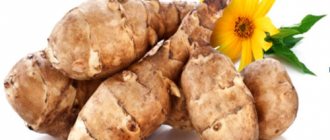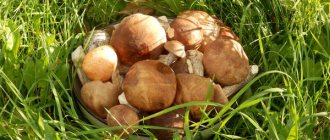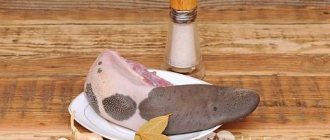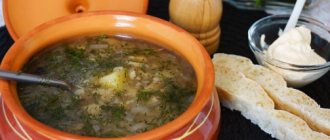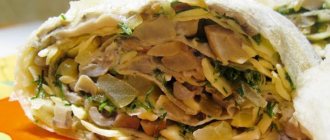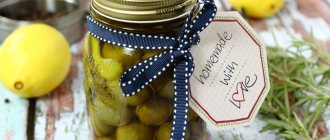Features of the process depending on the type of product
Each mushroom has its own characteristics in pickling. Mushrooms that do not need to be soaked :
- Hedgehogs.
- Saffron milk caps.
- Russula.
- Rows.
- Goats.
Some types of mushrooms can be salted together , for example:
- Milk mushrooms.
- Volnushki.
- Russula.
- Saffron milk caps.
- Loadings.
Some mushrooms are boiled , for example:
- Serushki.
- Volnushki.
- Bitter milk mushrooms.
- Chernushki.
- Violins.
For cold fermentation without soaking, the following mushrooms are used :
- Boletus mushrooms.
- Butter.
- White mushrooms.
- Talkers.
- Saffron milk caps.
- Chanterelles.
- Russula.
For fermentation with pre-soaking, take the following mushrooms :
- Burning russula.
- Bitter milkies.
For hot fermentation use:
- Russula.
- Rows.
- Bitter milk mushrooms.
- Honey mushrooms.
- Tubular mushrooms.
- White mushrooms.
Preparation with cabbage
We'll tell you how to ferment mushrooms and cabbage.
Ingredients:
Three kilograms of cabbage.- 0.25 kilograms of carrots.
- 0.3 kilograms of apples.
- One kilogram of mushrooms.
- Four tablespoons of salt.
Cooking method:
- Wash and chop the mushrooms.
- Chop the cabbage.
- Peel the carrots and grate them.
- Remove the core and cut the apples into small pieces.
- Place cabbage and apples alternately in a wooden container, and carrots and mushrooms between them.
- Cover with cabbage leaves, pour in brine and press down.
- Put oppression on top.
- Make sure the cabbage is covered with brine.
Here's how to ferment mushrooms and cabbage.
Several quick recipes for dishes with pickled mushrooms
But what delicious dishes can be prepared from pickled mushrooms.
Casserole with meat
Ingredients for the dish:
0.5 kilograms of veal or pork.- One jar of mushrooms with a volume of 500 milliliters.
- One onion head.
- Vegetable oil for frying.
- 0.2 liters of twenty percent cream.
- 0.15 kilograms of Gouda cheese.
- Salt and pepper to taste.
Cooking method:
- Chop and fry the onion in oil until light brown, then add the mushrooms to the pan and fry them a little, stirring the mushrooms and onions.
- Add cream and mix everything well again. Close the pan with a lid. Cook over low heat for four minutes.
- Cut the cooked meat and place it in a baking dish. In this case, the mold must be greased with oil and salt. Pour the sauce of mushrooms, cream and onions over the meat in the form, and then add grated cheese.
- Bake at 200 degrees Celsius in a pan covered with foil for 25 minutes. Next, remove the foil and keep in the oven for another ten minutes until golden brown. You can add fresh vegetables to the prepared dish.
The vinaigrette
Ingredients for the dish:
One large boiled beet.- Three boiled potatoes.
- One boiled carrot.
- Three pickled cucumbers.
- Half a can of canned peas.
- Half an onion.
- 0.2 kilograms of pickled mushrooms.
- Three tablespoons of vegetable oil.
- Pepper and salt to taste.
Cooking method:
- Wash the beets, but do not peel them, wrap them in foil and bake in the oven at 200 degrees Celsius until fully cooked.
- Wash carrots and potatoes and cook in water with salt until soft.
- Next, pour out the water and wait for the vegetables to cool, peel them.
- Chop all vegetables except onions into cubes of the same size. Just chop the onion.
- Mix everything and add a little salt.
- Add green peas and pickled mushrooms to the vegetables, then pour in the oil and stir.
Below is a video with a visual example of another recipe for making a vinaigrette with mushrooms:
How to remove excess vinegar from canned food?
When publishing this question: “How to remove excess vinegar in canned food,” I believe that it would be appropriate to indicate which canned food you mean.
But I think that answering a question with a question is certainly inappropriate. Therefore, I will try to give advice from my own experience; I can can a lot during the summer season.
I admit that in my youth, quite often, for some reason, cucumbers did not stand well in the apartment in the winter. Apparently the temperature in the apartment was quite high for them and there was not enough vinegar.
I had to add more vinegar and now the jars don’t explode. However, my daughter often says that cucumbers now contain a lot of vinegar.
I do this, open the jar, drain the marinade and pour cold, boiled water from the refrigerator into the jar, close the jar with a lid and put it in the refrigerator for a day.
After a day, I drain the water and taste it, if the excess vinegar has left the cucumbers, pour in cold boiled water as before, add a teaspoon of salt and a tablespoon of refined corn oil. (calculation for 800 g jar)
But it should be remembered that such cucumbers cannot be stored for a long time. When stored for more than 4-5 days, cucumbers lose turgor, become soft and tasteless.
This method is suitable for pepper, unless of course it is lecho. But for tomatoes, this resuscitation is completely unsuitable; the tomatoes will simply fall apart and serving them to the table will no longer be attractive.
Try it. Good luck!
To figure out how to remove excess vinegar from canned food, it is important to follow a few useful tips:
Typically, vinegar is a preservative, increasing the shelf life of homemade preserves. Often, an open jar of cucumbers or zucchini goes straight into the trash can because there is too much vinegar.
The most popular method is rinsing canned food. Cabbage or other product is immersed in cold water, then washed for 10 minutes. Drain and serve.
Another method is to drain the brine completely and pour cold water into the jar. Leave for several hours until all the vinegar comes out.
If there is too much vinegar in winter salads, then you can add aromatic olive, corn or sunflower oil with soy sauce, herbs and seasonings. This will reduce the taste of the vinegar a little and make the canned food less “sour.”
Since vinegar is a preservative, the product kept in water will have a shorter shelf life!
Problems and difficulties
In the first week, the temperature should be between 15 degrees and 20 degrees Celsius.
Attention! At high temperatures, yeast and acetic bacteria will appear, and at low temperatures, molds will appear.
The selection of spices during fermentation seems to be an essential point. Unlike pickling, the selection and ratio of spices during sourdough is a true culinary creativity. The composed composition will make the taste of pickled mushrooms unique.
Can they be stored at home?
You can store pickled mushrooms not only on the balcony and in cellars, but also at home , for example:
in enamel buckets, which are best suited for fermentation;- in barrels;
- in pans;
- in tubs;
- in glass jars.
All containers for pickled mushrooms must be boiled and dried; as for jars, they should be sterilized. Store in a cool place.
To prevent pickled mushrooms from freezing on the balcony or in the cellar, storage boxes must be insulated. High temperature - the mushrooms will sour, and low temperature - the mushrooms will become brittle and soft, and will also lose their taste.
Once every seven days you need to shake the mushrooms to move the brine . Cooled boiled water should be added when half of the brine has disappeared.
How to deoxidize food if you overdo it with vinegar or any marinade (see)?
The cases are simple and understandable in home, not always technologically advanced, conditions.
For example, they cooked meat in wine sauce. The hand trembled or they simply didn’t know how much vinegar, wine vinegar, lemon juice, ready-made marinade or the fermented canned food was poorly washed, it doesn’t matter. Everything is wonderful, the color, the smell, but sour. How to save a dish?
Vinegar is dangerous if you accidentally pour it into a dish. If possible, you just need to dilute the dish - with water, potatoes, rice, vegetables, meat. Depending on what dish was spoiled by vinegar. Yes, the amount of food will increase, but the vinegar will be diluted.
I once had to divide the contents of a frying pan—meat and vegetables, where I somehow accidentally added extra vinegar—in half, rinse one half under running water, and then return it back to the frying pan, into the other half. And, you know, it turned out fine, the vinegar was partially washed away, no one complained to me). Of course, I added spices, salt, and oil, since some of them went with the water.
So you can use this method as well.
It all depends on how much you went too far. That is, how much extra vinegar or other acidic ingredient was added to the food. It is known from chemistry that vinegar and other acids are quenched (neutralized) with soda, but in food this technique is not entirely acceptable. If the amount is small and you need to add just a little soda, then yes, you can do that, but soda, firstly, is not entirely safe in large quantities (heartburn is guaranteed if you overdo it), and secondly, it makes the dish bland, unpleasant, and in large quantities bitter taste.
Other methods of harvesting mushrooms
- Freezing. It retains its beneficial properties.
- Boil and freeze. This way the mushrooms will last for a year.
- Pickle the mushrooms.
- Fried mushrooms in the refrigerator will only be fresh for 24 hours.
- Fried mushrooms in the freezer. Will keep for six months.
- Marinated in a dry cellar. If the lids are tin, then one year, glass - two years.
- Homemade marinated mushrooms. Will last for eight months.
- Drying mushrooms.
- Pickling mushrooms.
In Russia, mushrooms are very popular. A variety of dishes are prepared from them: appetizers, salads, desserts, alcoholic drinks. Pickled mushrooms will be an excellent addition as an appetizer on the holiday table.
If you find an error, please select a piece of text and press Ctrl+Enter.
Rules for handling vinegar
Acetic acid was obtained long before our era. Some researchers claim that to preserve beauty and maintain tone, the well-known Cleopatra drank a drink in which apple cider vinegar was diluted.
But today’s vinegar is quite dangerous to health, it’s not for nothing that they write “Danger to Life” on the bottles of the product. It is very easy to get burned by vinegar if you spill it on an open area of skin; even more dangerous is if the product gets inside.
To avoid such problems, you must not forget about the basic rules for handling this product, and you must begin to follow them at the time of purchase, so as not to worry again:
- Buy only a quality product. Don't forget that vinegars can be natural or synthetic. The natural product is produced by acetic acid bacteria in alcohol-containing liquids, such as uncooked wine or fermented apple juice. A synthetic product was created in 1898, and today acetic acid is produced from byproducts of chemical fertilizer production or dry distillation of wood. In our country, 90% of the product is obtained from wood residues, so it is better to use this vinegar for household purposes and in everyday life: to remove scale, rust, glue, etc. For example, it is not suitable for food and pickled mushroom preparations.
- If you open a bottle of acetic acid, never sniff the product at the neck or bring the bottle close to your nose to avoid burning your respiratory tract. If you want to smell the product, wave your palm next to the neck of the bottle at arm's length so that the smell reaches you.
- When using acetic acid, be sure to follow the recommendations and proportions indicated on the package; there is no need to pour it extra.
- When preparing dishes, strictly follow the recipe and do not neglect neutralizing the vinegar, so as not to spoil the taste of the food or increase the acidity of the stomach.
- If you use acetic acid for household purposes, be sure to ventilate the room after using it. And to neutralize vinegar, or rather its aroma, use an odor absorber, which is often used as a pet care product, or use salt or soda for this purpose.

